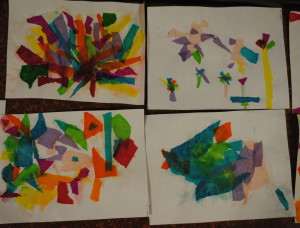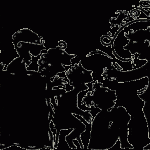I consider myself very lucky. Growing up, I had art every week. Unfortunately, that is hardly the case anymore. Between rubrics and budget cuts, students no longer have that necessary creative outlet readily available. Art is easily added to any classroom and to any lesson as long as you have the confidence and knowledge to do so. Here are some easy ideas for infusing art into your classroom:
Take advantage of art museums
Art museums are incredible sources for infusing art into the classroom – not just for trips. Many museums offer free teacher packets that provide activities and curriculum connections. Education departments often put material on their websites for teachers to use pre- and post-visit, but why not use it to inspire the classroom? If your local museum doesn’t have resources, The Metropolitan Museum of Art, Noguchi Museum and Guggenheim (among other major NYC museums) offer resources on their websites.
If you have some funds but not enough for a trip, many museums have outreach visits. An educator comes with activities and very often touches objects and an art activity. This is a great way to bring the museum to you, as well as another voice into the classroom.
Art On A Cart
Exactly what it sounds like – teachers can work together and have a cart (or another moveable storage contraption) full of art materials. The idea of a material buffet for free-flowing art projects is great for teachers who are nervous about leading art-making activities. Give simple prompts – use 6 pieces to create a three-dimensional sculpture, think of something you saw today and re-imagine it with clay – and let them explore. By giving limits on amounts, they have the structure needed to let creativity flow.
If you want to create an art cart, and don’t know where to start, here is an excellent link for stocking a cart.
Paper, paper, paper
Paper is an AMAZING resource. Having students brainstorm the different ways paper can be manipulated and using it to imagine or recreate something is one of my favorite things to do. From buildings to biology, students can cut, fold, tear, twist, bend, curl paper to create. And it’s paper – it teaches the idea that mistakes are OK. Copy paper is fine, card stock is better. You can also experiment with different kinds of paper – many art supply stores offer mixed packs or ‘ends.’
Incorporate it into other subjects and get moving
I sound like a broken record concerning multi-modal learning, but it’s true. We all learn differently. Combining art with Math, History, English, and even Science is an exciting way to appeal to all learners. Over the next few weeks, I will dedicate posts to these four subjects and how art can be incorporated into all of them – but just to get the sparks of creativity flying – creating a collage of integers, a Tableau-Vivant of a photograph, an illustrated story and a magnified painting of the parts of a flower are just a few ways to tie art making with core subject areas. Experiment and see what happens!
Have Confidence and Be Free to Fail.
It seems the teachers I’ve worked with are excited about incorporating art into their classrooms but fearful of ‘doing it wrong’. There is no wrong in art. Buy the book Beautiful Oops and read it. Not to your students, to yourself. Mistakes can lead to some amazing work, and the lesson becomes much richer when the focus is the process rather than the product. Take the pressure off yourself and focus on creating and nurturing critical thinking with art rather than the ‘right’ way. There are even numerous lesson plans based on this book – it’s a gem.
If a project crashes and burns, it’s fine. We learn when we fail and so do our students. Chances are if the project ‘fails,’ it probably just didn’t go according to plan rather than being ineffective. By focusing on the process, critical thinking and discovery in art making, expectations become reasonable and goals achievable.
So go make some art!






